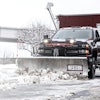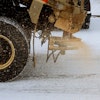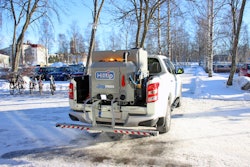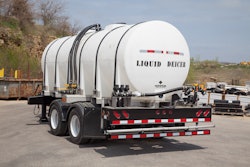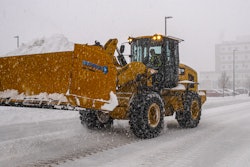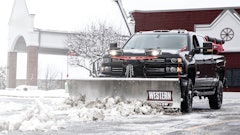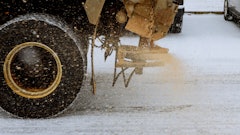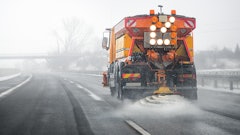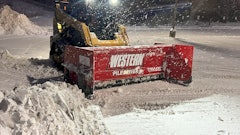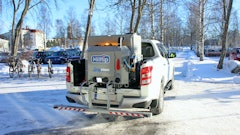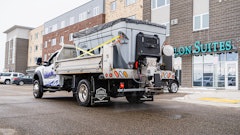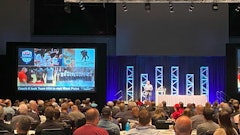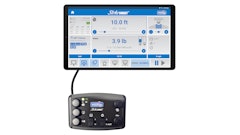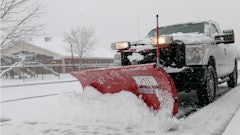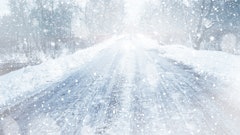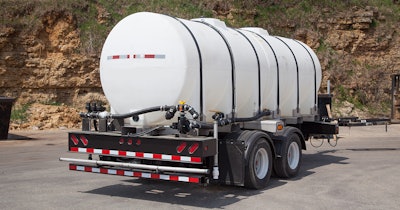
Every winter, contractors and operators around the country are faced with securing the equipment and materials needed to clear snow, de-ice and keep their residents and communities safe from the hazards of unsafe roadways.
As regional needs and trends change over the years, new products are created to meet demand. Liquid anti-icers (distributed before a snow storm) are reduce labor time, offer an eco-friendly option and help create safer and more manageable driving conditions.
What Is A Liquid Anti-Icer?
Liquid agents are called anti-icers instead of de-icers because the material is applied before the snow event. The liquid then reduces snow and ice buildup on the surface where it was sprayed.
Liquid systems are a popular choice because they can greatly reduce the amount of labor and materials needed to maintain road safety during or after a storm event. It also reduces black ice and sometimes even eliminates the need to send crews during or after a snow event, depending on the severity of the storm.
Pretreatment, the process of applying liquid anti-icers, can be done before the snowstorm by either several hours and even days, depending on conditions. Anti-icing liquid can be made of several different materials.
There are regions across North America experimenting with different types of anti-icers including beetroot, corn and the Wisconsin specialty: cheese brine. Most commonly used, however, is a salt brine—liquid sodium chloride (NaCl).
Different liquid combinations (used with a variety of chloride-based salts) can be used in temperatures ranging from -20 degrees Fahrenheit and higher.
Regional conditions, existing truck equipment and preferences will help determine what solution is right for your community.
Advantages of Liquid Anti-Icers
Precise Applications
Liquid sprayer systems can be calibrated to fit the exact area you are maintaining, reducing the risk of over and under application of product.
Less Material Usage
Because the anti-icing agent is in a liquid solution, it requires less material to be effective over longer lengths of road, saving long-term material costs.
Save Labor Time
Liquid anti-icing is one of the most effective ways to reduce labor (and therefore reduce complications) of snow and ice removal during a storm by preventing bonds from forming before the storm.
Reduce Scatter
Rock salt can quickly bounce and scatter across the road, reducing efficiency. Liquid solutions are sprayed and stay in place.
Not Displaced by Traffic
Similarly to reducing scatter, liquid anti-icers aren’t displaced by high traffic or slopes of the roadway.
Highly Effective
Liquid solutions can remain effective for hours/days depending on weather conditions.
Environmentally Conscious
The reduction of granular material is better for the environment. The amount of material used in spraying is less than using granular material, so it’s more cost effective than granular material
Disadvantages of Liquid Anti-Icers
Learning Curve
There are logistical hurdles to really mastering the art of liquid anti-icers. There is a dynamic between temperature, timing and the solution created. While liquid options are growing in popularity, and solutions are becoming easier to manage, there will still be time and understanding needed to effectively anti-ice with liquids.
Cannot Be Used In Isolation
While there are many great advantages to using liquid anti-icers, they cannot replace plowing and even de-icing after the fact.
Must Be Completed In Appropriate Weather
Anti-icing is the first in a series of actions to take when tackling a winter storm. Depending on the liquid solution you choose, you may have to pay attention to the temperature of the pavement when you’re anti-icing. Certain liquids have more strict requirements than others.
The Right Equipment For the Job
Liquid anti-icers are applied using sprayers that come out of a tank that holds the solutions. There are a variety of different options of sprayers that can be used across several lanes.
Different solutions will spray at different rates, so it is incredibly important to have your system calibrated correctly so you can protect your roads, and achieve effective ice melting. Speak with your trusted dealer or upfitter to learn about what solutions are right for your equipment and your community.

